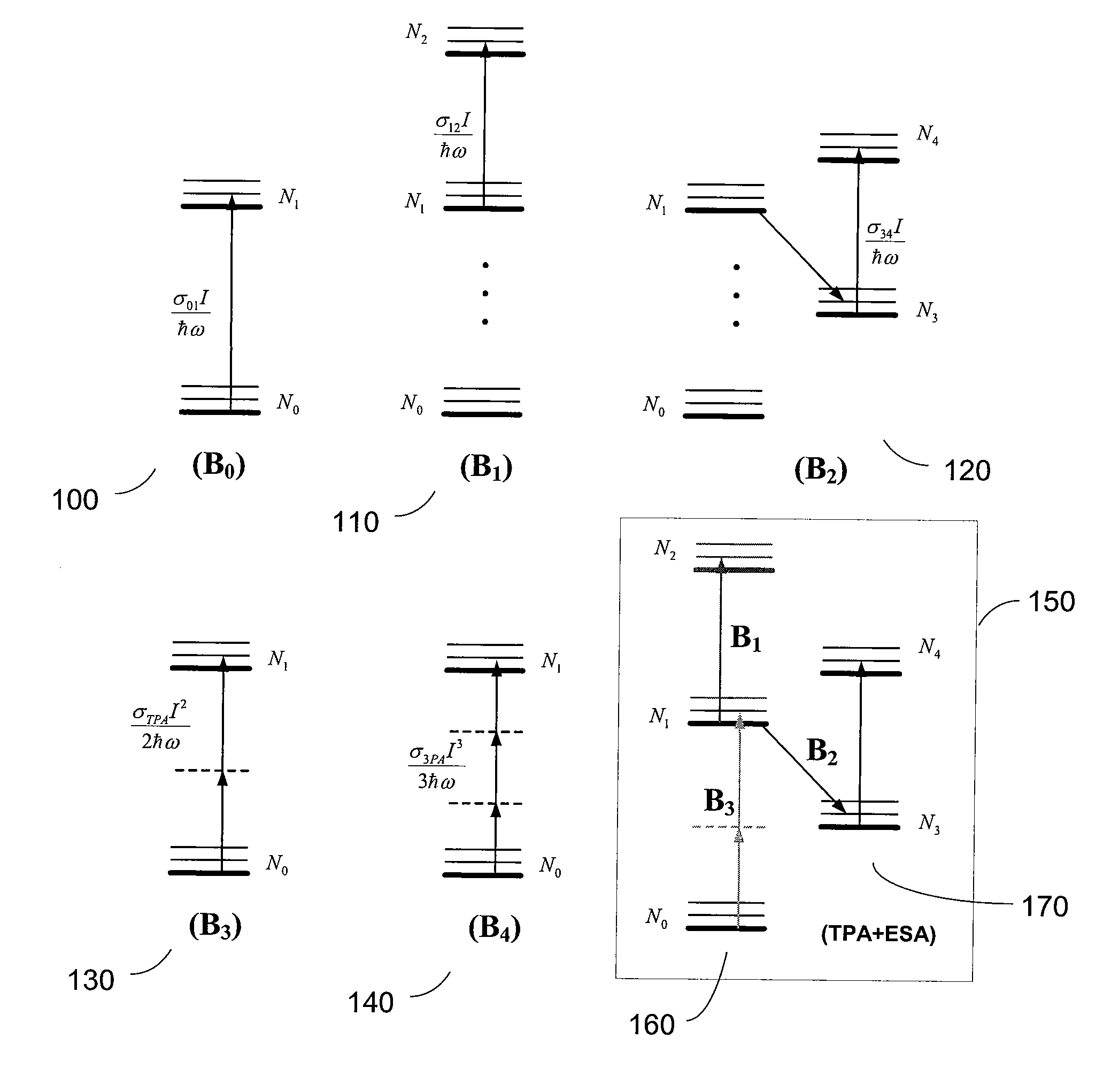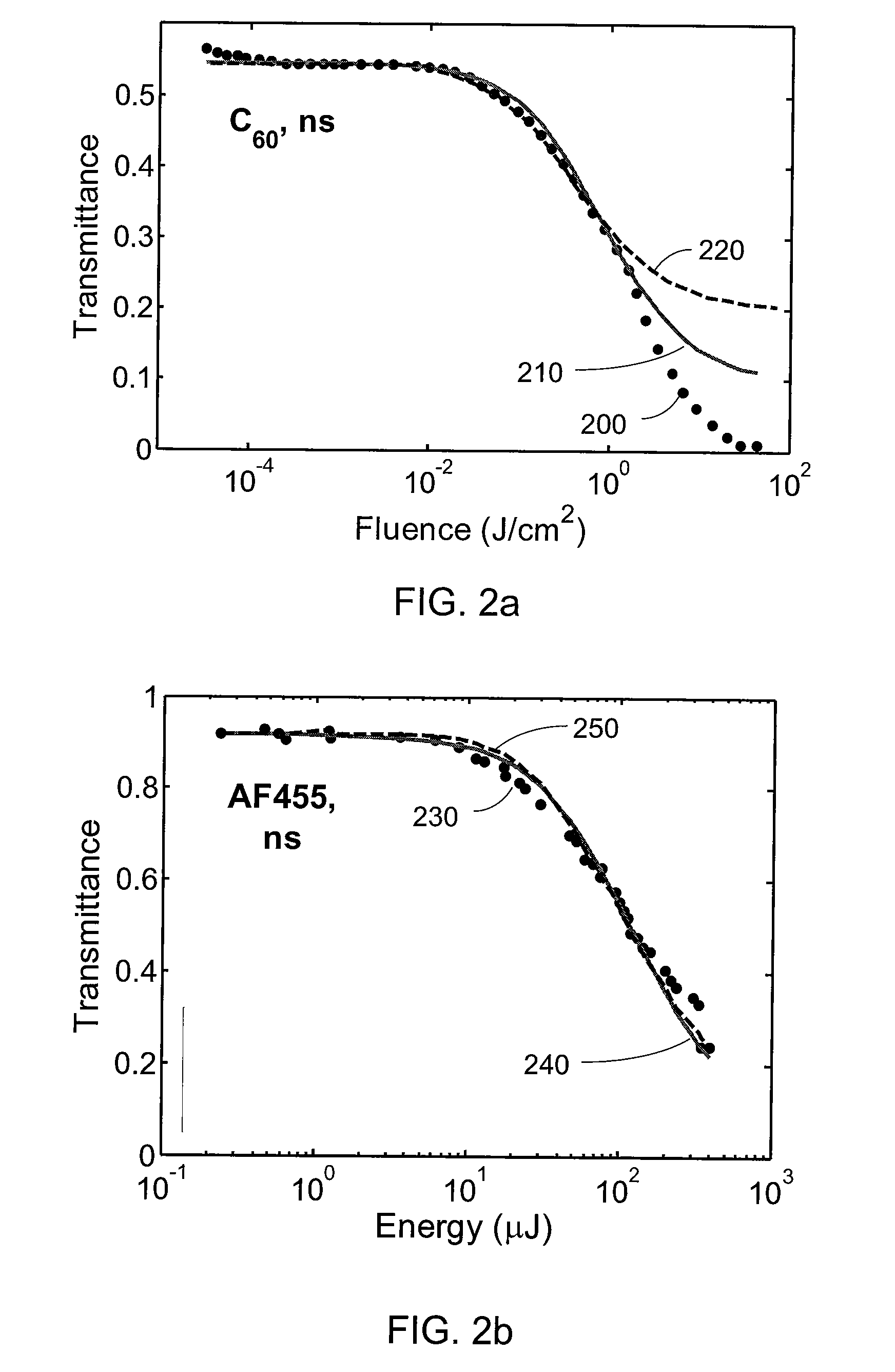Method, system and software arrangement for determining an interaction between an electromagnetic radiation and a material
a technology of electromagnetic radiation and material, applied in the field of method, system and software arrangement for determining an interaction between electromagnetic radiation and a material, can solve the problems of inability to accurately and robustly characterize a single numerical code, and inability to accurately predict the effect of photons
- Summary
- Abstract
- Description
- Claims
- Application Information
AI Technical Summary
Benefits of technology
Problems solved by technology
Method used
Image
Examples
example
PPAI
[0144]With the advent of lasers capable of providing shorter pulses and higher intensities, materials that exhibit three or more photon absorption processes can be studied. These materials may be of interest in areas such as laser micro- or nano-machining because of their ability to reduce the feature size of structures in substrate materials. In contrast to the nonlinear materials described herein, there may have been relatively little prior investigation of these materials including, e.g., a 3PA dye PPAI described in the Wang publication. Experimental investigations of this material indicate a high three-photon absorption cross-section in the near infrared region, so that all the parametric vectors and matrices may be zero or negligibly small, except for the following two:
σ3=[σ3PA,0],D^3=(-σ3PA0σ3PA0).(57)
[0145]The energy level absorption diagram for PPAI may include only a single building block B4 140 shown in FIG. 1, where the appropriate parameters are provided in Table 1. ...
PUM
 Login to View More
Login to View More Abstract
Description
Claims
Application Information
 Login to View More
Login to View More - R&D
- Intellectual Property
- Life Sciences
- Materials
- Tech Scout
- Unparalleled Data Quality
- Higher Quality Content
- 60% Fewer Hallucinations
Browse by: Latest US Patents, China's latest patents, Technical Efficacy Thesaurus, Application Domain, Technology Topic, Popular Technical Reports.
© 2025 PatSnap. All rights reserved.Legal|Privacy policy|Modern Slavery Act Transparency Statement|Sitemap|About US| Contact US: help@patsnap.com



